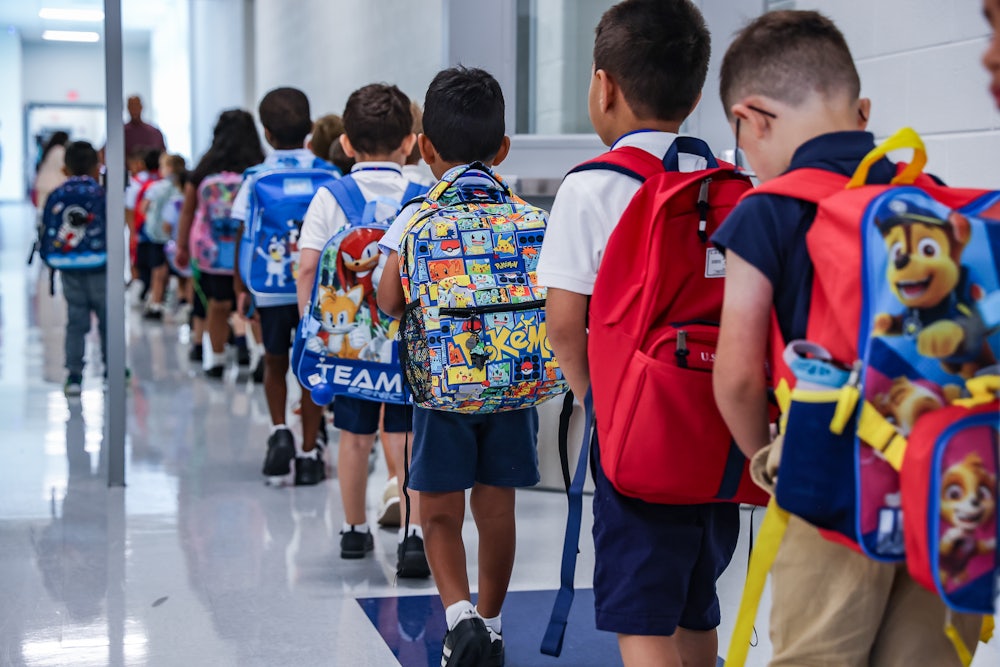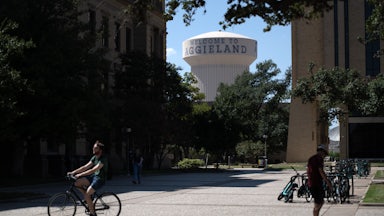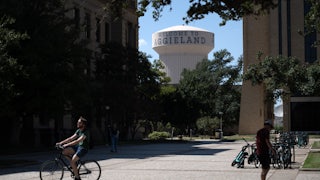One of the final vestiges of pandemic relief is set to end on Monday, with states scrambling to finalize their spending plans for Covid-era federal education block grants and reckoning with a future without additional funds. As school districts face compounding crises—including persistent learning loss among students, lower enrollment, inflationary pressures, and difficulty retaining teachers—the looming loss of these emergency funds could have far-reaching consequences.
In the wake of the coronavirus pandemic, Congress approved billions of dollars for Elementary and Secondary School Emergency Relief program funds, commonly known as ESSER. The third and largest round of ESSER grants was implemented by the American Rescue Plan Act, the nearly $2 trillion coronavirus relief measure approved by Congress in 2021, appropriating around $122 billion to help schools recover from the pandemic. The law required schools to dedicate at least 20 percent of the funds to addressing learning loss from students’ extended time away from school.
States and school districts were required to obligate the funds by September 30, 2024, and spend the money by January 25, 2025. (States may seek a 14-month extension to liquidate the funds by March 30, 2026.) Four states and Puerto Rico have seen their extension requests approved, but many states are not expected to seek extensions. After the September 30 deadline, states and school districts can no longer use the funds for employee expenses, such as teacher salaries—instead, that money must be dedicated to vendor contractors.
The money from ESSER grants amounted to roughly $2,500 per student nationwide, but higher-poverty districts received more funds, amounting to an even larger amount of spending per student. A 2023 report published by the Brookings Institute estimated that the end of the program would result in a significant fiscal cliff, with an average of $1,000 less being spent per student across school districts; this effect would be particularly dramatic for students in high-poverty districts, where the end of ESSER will have a 6 percent impact on school budgets.
“As this funding expires, the disparities in achievement that widened during the pandemic have not closed yet,” said Joanna LeFebvre, a research associate at the Center on Budget and Policy Priorities. “States will need to step in and make up for some of that funding loss in order to sustain the growth that was made possible [by the grants].”
The reduced revenue streams will also likely force school districts to make tough decisions about what to cut. That includes the looming possibility of layoffs; school districts in Arlington, Texas, and Missoula, Montana, announced earlier this year that they would need to reduce staffing when the grants expired. School districts may also try to increase class sizes or delay pay raises for teachers.
“The next two years are going to be tight for many, many schools around the country as they figure out how to live without those relief funds. And some will be better at managing that, and some will find themselves really in financial trouble,” said Marguerite Roza, director of the Edunomics Lab and research professor at Georgetown University’s McCourt School of Public Policy.
Recent evidence has indicated that ESSER grants helped students recover from learning loss during the pandemic and helped narrow the gap between school districts with high poverty levels and wealthier districts. One recent study found that “federal relief can explain between one-third to one-half of the improvement in districts with more than 70 percent of students receiving federal lunch subsidies.”
How school districts spent the ESSER grants varied somewhat by location, and as the pandemic progressed. A 2022 study by FutureEd found that urban districts were more likely to spend ESSER money on social and emotional learning, while rural districts were more focused on upgrades to facilities. This result was also borne out in an August survey of school superintendents by AASA, the School Superintendents Association, which found that rural districts were far more likely to have reported an investment in facilities than their urban counterparts.
The AASA survey also found that the majority of districts invested emergency funds in programs intended to combat learning loss, such as summer learning and afterschool programs. The second-most-common expenditure was for addressing students’ mental health and behavioral needs through staffing, programming, curriculum, and professional development.
Afterschool programs may also be affected by the end of the ESSER funds. An October 2023 survey of thousands of school districts nationwide by the Afterschool Alliance found that districts dedicated around $5.4 billion to afterschool and summer programming. The study found that many school districts used the ESSER funding to address some of the challenges in implementing successful afterschool programs, such as hiring staff and offering transportation.
Despite knowing the deadline for the funds for years, school districts may still be unprepared for the end. Education budgets are generally static year over year, said Roza, meaning that when school districts saw a dramatic increase in funds, they immediately took advantage of those new dollars to hike up teacher salaries or hire more staff. “I did hear plenty of districts say, ‘Oh, I’m sure the state will cough up money, because they’re not going to expect us to cut this.’ I’m like, ‘Yes, they are,’” said Roza.
The end of the ESSER grants will be accompanied in several states by cuts to other funding streams for education. A recent report by the left-leaning CBPP found that 17 states—more than half of them in the South—are pursuing two or more policies that would cut education revenue even as they face a loss of more than 5 percent in education funding due to the end of ESSER. Arkansas, for example, is facing a 6.8 percent decrease in education funding due to the end of ESSER, even as it is pursuing income and property tax cuts and funding shifts to school vouchers. The CBPP report estimates that the ESSER loss, as well as these tax policies, will result in a loss of nearly $2 billion in education funding in Arkansas in the 2025 fiscal year.
“Many states in recent years have cut taxes, and will be much worse positioned to make ongoing investments in education,” said LeFebvre.
Regardless of what states do, there will almost certainly be no movement on ESSER on a federal level. Although the first rounds of ESSER grants were approved on a bipartisan basis at the beginning of the pandemic, the American Rescue Plan Act was pushed through Congress with only Democratic votes. Last year, a trio of House Republicans sent a letter to the Department of Education questioning the use of funds on equity initiatives, arguing that these obligations of funds “appear to have nothing to do with COVID-19 mitigation or learning loss and are a waste and misuse of taxpayer-funded COVID-19 relief programs.” Senate Republicans have also questioned the level of oversight on ESSER expenditures.
Roza also said that the lack of clear communication on the purpose of the grants led to some confusion from school districts. She relayed the story of a superintendent who believed it was supposed to act as stimulus money and be spent as soon as possible. “I heard district leaders say, ‘I’m supposed to diversify the workforce, or I’m supposed to invest in technology, or I’m supposed to give pay raises to my team,’” Roza said. “That was the missing piece—that North Star: What do we hope to accomplish with that money?”
Conversely, having a clear focus for the funding could result in greater learning recovery. Mississippi, which has a significant number of high-poverty and rural districts, dedicated much of its funding to revamping crumbling infrastructure. According to the Education Recovery Scorecard by researchers at Harvard University, Stanford University, and Dartmouth College, the state was also one of the few that saw an improvement on pre-pandemic reading levels between spring 2022 and spring 2023.
There was a question as to whether school districts would be able to spend all of their remaining ESSER funds before the January deadline, particularly if their state does not seek an extension for the program. The AASA survey found that around 15 percent of superintendents believe they need more time to liquidate all of the funds. Nationwide, school districts have obligated around 87 percent of ESSER funds, and the Department of Education has said it expects 99 percent to have been spent by January. If there is any money left on the table by school districts by the deadline, it will need to be returned to the federal government.
Like other Covid-era relief measures, the ESSER grants helped address a short-term problem caused by pandemic societal changes—in this case, learning loss among students—which then highlighted preexisting inequities. The ESSER expiration exposes some of the lingering achievement gaps between high-poverty school districts and their wealthier counterparts; according to the Education Recovery Scorecard survey, poorer districts are still further behind on achievement levels as compared to 2019 levels than wealthier districts. But with states responding differently to the end of ESSER grants, the long-desired return to normal will continue to be uneven.
“Kids are still behind where they would have been, and now the money is going away. So the question is, what’s going to happen to the recovery?” said Roza. “Are we going to continue to see recovery now the money’s gone, or is this the new world order for our kids now, is that they never recover from Covid, and that’s the new level of their scores?”










